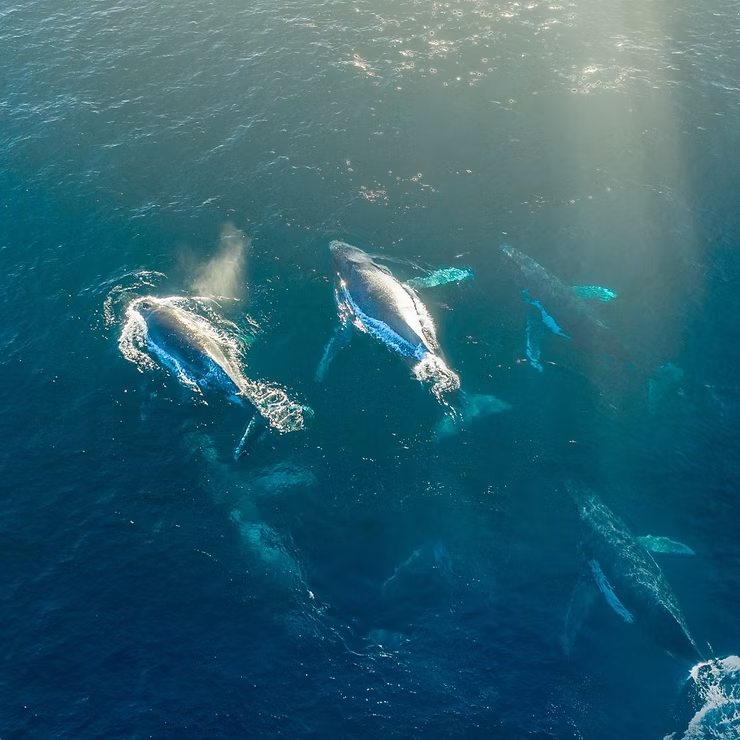The Wonders of Animal Migration
Migrations are among nature’s most breathtaking spectacles, with marine and terrestrial animals traveling vast distances to survive, feed, and reproduce. These journeys not only sustain species but also maintain ecological balance, distribute nutrients, and inspire human culture. Yet, migratory routes are increasingly under threat from climate change, habitat loss, and human activity.
Epic Journeys Across the Oceans
Gray Whales: Arctic to Baja
Gray whales complete one of the longest mammal migrations, traveling up to 12,000 miles annually. From the Arctic’s rich feeding grounds to Baja California’s lagoons, they endure predators and human interference while ensuring the survival of their young.
Humpback Whales: Songs in Motion
Humpbacks navigate thousands of miles to reach breeding waters, communicating with songs that adapt when confronted with ship noise. This highlights both their intelligence and their vulnerability to noise pollution.
Sperm Whales: Deep Sea Voyagers
Capable of diving for 90 minutes, sperm whales use echolocation to hunt squid in the abyss. Their long migrations remain partly mysterious, but sonar and shipping disturbances pose serious threats to their survival.
Rivers and Shoals: Fish on the Move
The Salmon Run
- Brings marine nutrients into freshwater ecosystems
- Supports fishing economies and tourism
- Holds deep cultural value for Indigenous communities
Despite its importance, the salmon run is threatened by climate change and overfishing, underscoring the need for sustainable practices.
The Sardine Run
Each year, millions of sardines migrate in massive shoals visible from space. Their journey sustains predators like sharks and dolphins while fueling marine biodiversity. Protecting these runs requires careful fishery management.
Eels and the Sargasso Sea
Eels embark on mysterious migrations from freshwater rivers to the Sargasso Sea. Guided by Earth’s magnetic fields, they transform physiologically before spawning. Yet, overfishing and habitat loss jeopardize their future.
Wings Over Continents
Arctic Terns
These small birds hold the record for longest migration, traveling 40,000 kilometers annually from pole to pole in pursuit of endless summer.
Bar-Headed Geese
Flying over the Himalayas at 7,000 meters, these geese possess extraordinary physiological adaptations, but face mounting threats from habitat loss and climate change.
White Storks
With journeys spanning over 10,000 kilometers, storks symbolize endurance and seasonal renewal. Historic accounts of their travels even shaped myths and cultural traditions.
Threats Along the Way
- Climate change: Alters migration cues and habitats
- Habitat loss: Removes vital rest stops along routes
- Overexploitation: Overfishing and hunting disrupt populations
- Noise pollution: Interferes with communication and navigation
- Man-made barriers: Roads, fences, and buildings block ancient pathways
Cultural and Ecological Importance
Migratory species act as pollinators, seed spreaders, and food web stabilizers, making them essential for biodiversity. They also hold deep cultural resonance, appearing in myths, art, rituals, and literature as symbols of resilience and renewal.
Safeguarding Migratory Marvels
Conservation Strategies
- Creating safe migratory corridors
- Restoring degraded habitats and breeding grounds
- Implementing and enforcing protective policies
The Role of Technology
Satellite tags, acoustic monitors, and GPS tracking help scientists uncover migration routes and identify critical habitats. This data informs conservation strategies while deepening our understanding of these remarkable journeys.
Conclusion
From whales navigating oceans to birds soaring across continents, migrations are vital to life on Earth. Protecting them is not just about saving species—it’s about preserving ecosystems, cultures, and the natural balance of our planet. By supporting conservation and sustainable practices, we can ensure that these timeless journeys continue to inspire and sustain generations to come.

